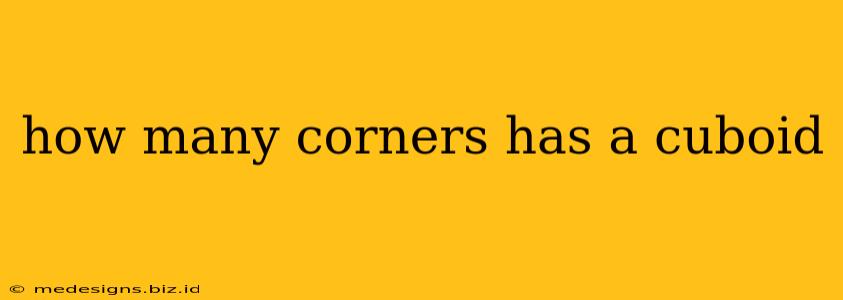How Many Corners Does a Cuboid Have? A Simple Geometry Lesson
A cuboid, also known as a rectangular prism, is a three-dimensional shape that's all around us. From boxes to buildings, understanding its properties is fundamental to geometry. One of the most basic questions about a cuboid is: how many corners does it have?
The answer, simply put, is eight.
Let's break it down further to solidify your understanding.
Understanding the Corners of a Cuboid
A corner, in geometric terms, is a point where three or more edges meet. Think of the sharp points on a cube, or a rectangular box. Each of these points is a corner.
A cuboid has six faces (flat surfaces), twelve edges (lines where two faces meet), and eight corners (vertices). You can visualize this easily by imagining a standard rectangular box:
- Top Face: 4 corners
- Bottom Face: 4 corners
These eight corners are what define the three-dimensional space the cuboid occupies.
Why is knowing this important?
Understanding the fundamental properties of shapes like cuboids is crucial for various reasons:
- Basic Geometry: It lays the groundwork for more complex geometric concepts.
- Spatial Reasoning: It helps develop spatial reasoning skills, crucial in many fields.
- Real-world Applications: From architecture to packaging design, understanding cuboids is practical.
- STEM Education: It's a key component of STEM education at all levels.
Beyond the Basics: Exploring Cuboids Further
Now that we've established that a cuboid has eight corners, you might want to explore further aspects of this fascinating shape:
- Surface Area: Learn how to calculate the total surface area of a cuboid.
- Volume: Discover how to determine the volume a cuboid can hold.
- Different Types of Cuboids: Explore the variations, such as cubes (where all sides are equal).
By understanding the simple properties of a cuboid, like the number of corners it possesses, you are building a strong foundation in geometry and spatial reasoning. So, remember, a cuboid always has eight corners!
